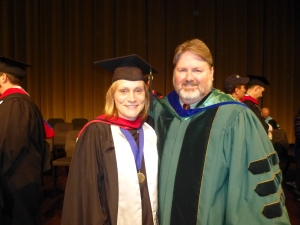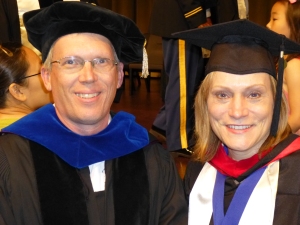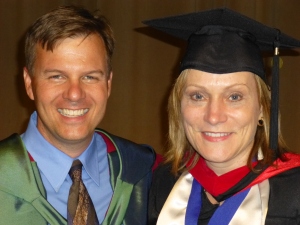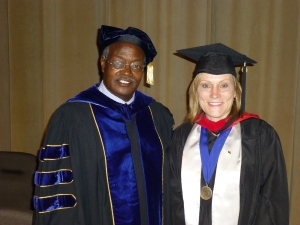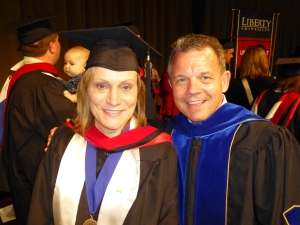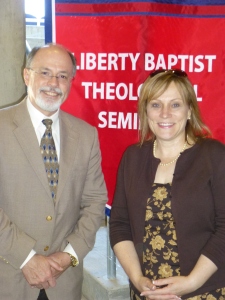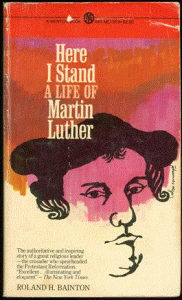INTRODUCTION
Pietism has been deemed by many church historians “one of the most influential Protestant movements since the Reformation,”[1] yet this movement is also one of the least understood ones. Through the centuries it has been viewed through the lens of separatism, mysticism, and anti-intellectualism. Yet Pietism was the attempt to counter the solely theological expression of Lutheranism, which was perceived as cold and lifeless by those who wanted to live out their faith in a much more felt and expressed manner. Pietism led not only to focus on personal holiness, but also found expression in social work. One Pietist’s life work, that of German August Hermann Francke, serves as a showcase of Pietism’s emphasis on a living faith that would not solely trust God for salvation, but sought to serve man as an outgrowth of a regenerated life. It also serves to show that Pietism is a movement that brought about not just a vibrant faith, but also great advances in societal improvements in a country and people greatly scarred by the Thirty Years’ War.
PIETISM AND ITS ORIGINS
Church historian Martin Brecht has called Pietism “the most relevant piety movement of Protestantism after the reformation.”[2] Shaped by the writings and teachings of two key men, Philip Jacob Spener (1635-1705) and August Hermann Francke (1663-1727), the Pietists had formed and branched off from the Lutherans after the Reformation. A few decades after the Reformation, calls had begun to arise that Lutheranism represented “practical atheism,”[3] and Pietism was – as the name implies – a movement to strengthen instead the practically lived elements of the believer’s experience. The Pietists were moving closer to the Moravian body of thinking, but also experienced influences from the Free Church, the Evangelical Covenant, and the Baptist General Conference. Other ideas came from such groups as the Mennonite, the Reformed, the Methodists, and even to a degree the Roman Catholics.[4]
German Lutheran Pietists became to many, as described by Clifton-Soderstrom, “an odd breed, a ‘separate branch’ of Christians, though that’s never what they intended.”[5] Drummond writes that Pietists were seen to fly from the world (Weltflucht) and that they were perceived to be “purely negative, sectarian, ultra-Puritan.”[6] Instead, the Pietists’ desire can be described as threefold: first, they placed a strong emphasis on an individual believer being part of a Christian community in worship and in devotion; second, they were not closing themselves of to the ills of society, but were rather actively involved in politics and social issues; third, their passion was for world evangelism and mission, and Pietists actively pursued sharing the Gospel in various parts of the world.[7]
Philip Jacob Spener’s writing is viewed by many church historians as the theological root of Pietism. Born in 1635 in the middle of the Thirty Years’ War in the Alsatian region near Strasbourg, Spener was a voracious reader and was influenced by the reading of Johann Arndt’s True Christianity. Arndt had argued for a move from the spiritual dryness of orthodox doctrine to a spiritual life expressed in love toward the fellow man and enriched by mysticism. In Arndt’s True Christianity, Spener read thoughts like the following that shaped his views:
The love of a good conscience is the love of neighbor. The love of God and the love of neighbor are one thing and must not be divided. The true divine love cannot be better noted or proven than in the love of neighbor…. Again, the love of God cannot dwell with the hatred of man, or in a hateful heart…. We are to treat our fellowman as God treats us…. As he is minded toward us, so we are to be minded toward our neighbors, and as we act toward our neighbors, he will act toward us. He testifies in our hearts to convince us how he is minded towards us. We are to be so minded toward our neighbor.[8]
Additional reading of devotional books by English Puritan authors highlighted to Spener the aspects of “self-examination, an earnest quest for holiness, and otherworldly standards of morality,”[9] which would set apart the believer from his neighbor. The Thirty Years’ War had caused many to question faith, and how it is to be lived. Spener reacted in his Pia Desideria (Pious Desires) to these influences and to what he perceived to be deficiencies of the Lutheranism of the seventeenth century.[10] Pia Desideria was published as a preface to Johann Arndt’s Church Postil in 1675. This publication of the Spener’s wishes for devoutness in the reformation of the church is considered the “precipitating event in the birth of German Pietism.”[11] At first, the name “Pietism” was an “uncomplimentary nickname bequeathed to posterity by Pietism’s detractors,”[12] much like Methodism, which was likewise nicknamed to project deprecatory humor onto the group and its methods of studying the Scriptures. The name may have come from the name of Spener’s publication, but may also have been derived from Pietism’s conventicles, which were called collegia pietatis, or “study classes in piety”[13].
While it began as a mocking name for the group, one of Pietism’s proponents, Joachim Feller wrote a poem that defined the group:
The name of the Pietists is now known all over town.
Who is a Pietist? He who studies the Word of God
And accordingly leads a holy life.
This is well done, good for every Christian.
For this amounts to nothing if after the manner of rhetoricians
And disputants one puts on airs in the pulpit
And does not live holy as one ought according to the teaching.
Piety above all must rest in the heart.[14]
Pietists could be loosely divided into four major groups, according to Drummond. First, those wanted who wanted to be Church reformers, but that this needed a layer of laity and clergy, which would “act negatively like salt, to preserve the Church from decay, and positively like leaven, to raise the standard of devotional life and discipleship.”[15] Second, some were those who had given up largely on the Church and had become only nominal attenders, but who found fellowship with the “twice-born”. Third, another group actually had split off from the Church and started small communities engaged in agriculture and business. Fourth, at the periphery of Pietism and Mysticism, groups were found who constituted “a tangled undergrowth of uncouth, heretical sects.”[16]
THE PERSON AUGUST HERMANN FRANCKE
August Hermann Francke, a German Protestant minister and ultimately philanthropist[17], became one of the most prominent names associated with Pietism. Francke was born March 22, 1663 in Lübeck and died June 8, 1727 in Halle an der Saale. A website dedicated to Pietism, calls August Hermann Francke “perhaps the most famous Pietist to apply Arndt’s theology of social obligation.”[18] Smith writes, ““If Jacob Spener was the impetus for historic Pietism, August Hermann Francke institutionalized it.”[19] His early life was influenced by a Christian upbringing. Hartmann writes in an 1897 reflection on the life of August Hermann Francke,
With men who have achieved prominence, especially in the gifts of the mind and the heart, one often asks about the influences which father and mother had on the growing child. August Hermann Francke himself, from whom we have written reflections about the years of his childhood and youth, names the father as the one who imprinted upon him lasting guidelines for this future life. Next to the spiritually relevant father, the mother had apparently stepped back, which came about naturally due to the youth with which she entered the marriage. Both mother and father, however, were faithful in the care for their children, rooted deeply in the love of the word of God, sincerely concerned for awareness of their own salvation, and therefore always made an effort to raise their children in the discipline and admonition of the Lord.[20]
Yet with all the Christian influence in childhood, Francke did not experience a conversion until he was 24, after he had already spent the majority of his young life studying Scripture, theology, biblical languages, and other more general sciences. His father, Johannes Francke, who had cared so diligently for the spiritual wellbeing of his six children, had died when Francke was only seven years old. Yet his father’s desire that his only son should become well-educated was accomplished after all with the help of a private tutor until he entered the Gymnasium at the age of 14. Francke was a diligent student who even asked his mother for a room where he might be able to study and pray at the age of ten, and so it was that not surprising that, only one year after the start of his regular school education, Francke was deemed mature enough for academic studies at a university level.[21]
Francke had learned Hebrew, Greek, English, French, Italian, and the Rabbinical language during his studies. As he felt his Hebrew was lacking, he traveled to Hamburg to study under the renowned Hebrew teacher Esdras Edzard. In order to teach Francke, Edzard chose an unusual didactic method: he told Francke to study diligently the first five books of the Bible during his time away from him. Back in Gotha, Francke completed this task and realized joyfully that he had learned one-third of the vocabulary of the Hebrew Bible. He continued to sharpen his Hebrew skills by reading through the Hebrew Bible six times.[22]
In 1684, Francke was invited to return to Leipzig to room with and at the same time teach Hebrew to Christoph Wichmannshausen, a friend. Their abode happens to be in the house of the son-in-law of Philip Jacob Spener. During this time, Francke’s relationship to God, despite all his study of the Scriptures, was shallow. As he writes,
As far as my Christianity was concerned, particularly during my first years in Leipzig, it was very bad and gross. My intention was to be an eminent and learned man to gain wealth and to live in good days…. The surges of my heart were vain and were directed to future things which I did not have in my hand. I was more concerned to please men and to place myself in their favor than I was for the living God in Heaven. In external matters as well, I copied the world in superfluous clothing and other vanity. In short, inwardly and outwardly I was a man of the world and did not remove myself from evil but drew evil to myself. My knowledge increased but because of it I was ever more pompous.[23]
In 1686, Francke, encouraged by Philipp Jacob Spener, founded the Collegium philobiblicum, a conventicle, one of the “small groups devoted to Bible study, prayer, mutual accountability, and outreach”[24], with the purpose of understanding of and pushing toward exegesis of biblical texts.[25] This group grew so large and popular, made up of both students and citizens of Leipzig, that the authorities took note and issued an edict to prohibit the assembly on March 10, 1690.[26]
Francke had left Leipzig in 1689, as he was seeking more than simply the professorial position. His seeking led him to a deacon position in Erfurt in the spring of 1690. After a year, Francke had to leave Halle, as his opponents had managed to influence the elector of Mainz to expel him from Erfurt. At the end of 1691, he was called to Halle by Frederic III of Brandenburg. Here he taught at the University of Halle and at the same time held a pastorate in Glauchau, a suburb of Halle. He married in 1694 and had two sons and one daughter with his wife Anna Magdalena. One of his sons died early.[27]
Undeterred by all his critics, Francke continued his work. He founded the Collegium Orientale theologicum in Halle in 1702. His primary concern during this time, which he personally drove forward, was that “philology would stand at the top of the scholarly ladder.”[28] To ensure this, Johann Heinrich Michaelis, a renowned biblical scholar, headed this effort. By 1720, the Michaelis Bible was published, which represented an effort “of such scholarly quality that until recently it was still cited in the apparatus of the Stuttgart Biblica Hebraica (BHK3).” [29] Yet even in this, Francke received much critique. From January to September 1695, he published his Observations biblicae (more commonly known as Monthlies), in which he tried to describe the perceived erroneous or not far enough reaching interpretations in Luther’s teaching. He was vehemently attacked, even though his declared intentions were printed in a sub-title of his first issue,
Notes on several passages of Holy Scripture in which the German translation of the late Luther is compared with the original text, with an appropriate suggestion of where a better understanding of the words may be found, as would serve for edification in Christian doctrine and application in prayer.[30]
Beginning with the May issue, Francke was forced to defend his work, as the opposition had become quite strong, and voices had become furiously enraged, with many of them coming from orthodox pastors.[31]
To Francke’s great credit, his work did not stop because of opposition. In particular, his educational reform efforts, discussed in detail below, have stood the test of time. They began in 1695 amidst strong opposition to his pietistic writings and continued until his death in 1727.
THE DRIVING FORCE BEHIND FRANCKE
Through the centuries, Pietists have often been accused of living in an otherworldly fashion by their detractors. Describing how unfairly historians have dealt with Pietism and its impact on society in their writings, Brown notes,
A frequent stereotype of Pietistic Christianity portrays it as almost exclusively preoccupied with inward devotion and private moral scruples. On the contrary, the Pietist milieu resulted in a desire to transform the living conditions of the poor and oppressed, reform the prison system, abolish slavery, break down rigid class distinctions, establish a more democratic polity, initiate educational reforms, establish philanthropic institutions, increase missionary activity, obtain religious liberty, and propose programs for social justice.[32]
Francke was highly influenced by the considerations and writings of Spener. Himself influenced by the writings of Arndt, Spener had promoted a theology of preaching that perceived a primary need of the poor to have access to the Word of God. In addition, he saw the pastoral role as one that is closely connected to the parishioners in this manner, especially to those with great need due to poverty or lack of education. Spener’s belief was that those who are poor in this world were “best suited to receive the gift of faith and best suited to live a life dependent on God.”[33]
Francke quickly absorbed Spener’s teaching on how to deal with the poor. His writing reflects an understanding of Christian living that does not separate faith in its theological articulation from one that exhibits itself in practical expression. In Pia Desideria, Spener wrote
Although the community which the Christians established in the early Jerusalem church was not commanded, who considers that perhaps another kind of community of goods may be very necessary? Since I must acknowledge that I have nothing which is my own, but that everything belongs to God, and I am appointed to be a steward over it, I am not free at all to keep what is mine for the honor of the householder and the need of my fellow servants, love demands that I use what is mine, I must not hesitate to offer it as community property which, to be sure, my neighbor cannot demand by civil right but which, according to the divine right of love, I dare not withhold and keep to myself as long as my neighbor’s needs cannot be met in another way.[34]
The connection between a regenerated life to one that acts in a manner reflective of the love and grace imparted by God is one that became of great understanding and importance to the Pietists. Much was to be done in a society, in which many subsisted on bare minimum. Francke’s motivation was to change one life at a time through providing for the immediate and physical need and at the same time bringing an understanding of the Word of God. It is no wonder then that Francke slowly adopted a lifestyle that is best captured in his own words: “A life changed, a church revived, a nation reformed, a world evangelized.”[35]
EFFORTS IN BETTERING EDUCATION
Already during Francke’s time as a deacon in Erfurt, and later as he became pastor of a church in Glauchau, a suburb of Halle, it became clear that people were drawn to him, in particular children. After his sermons, they would crowd around him and ask him to examine them from the sermon they had heard. Francke was delighted in their interest in the word of God. Their parents, likewise, began to enjoy his teaching. He began to purchase Bibles for them; when money was tight, it might only be a New Testament, causing him to be accused at one point of distributing heretical writings by those who opposed him.[36] Francke believed that even the most simple-minded persons could and should be exposed to Scripture, in the hope of leading them to salvation:
Practical Reading is essentially necessary and eminently useful; and its object is the application of the Scriptures to faith and practice. This application respects either others, or ourselves; and, of course, it would be absurd to apply Divine Truth to our neighbour, before we have done so to our own hearts. To deduce practical doctrines and inferences from Scripture, and to apply them in an historical way, is not properly Practical Reading, which chiefly respects the affections of the person who institutes it.
Practical Reading is of such a nature, that it may be prosecuted by an illiterate person; for the application of Scripture which it injoins, is connected with salvation; and therefore, if it were not within the ability of the unlearned, it would be vain to concede to them, the reading of the Scriptures.[37]
Francke was very interested in children’s school attendance, yet found that many families only sent their children sporadically. When asked for the reason, many cited poverty. Francke felt that schools needed to play a larger part in the education of children, in addition to the parental role. Poverty was not to be a reason for gaps in education. He requested funds from his own church’s tithes to pay for impoverished families’ school money. Yet many of the children had become used to being able to run the streets of the town outside of school, so that his efforts at first were somewhat fruitless. In addition, the parents were often lacking in discipline exhibited in the home.[38]
To counter this, Francke began inviting families into his house. These would arrive at his door every Thursday to gather food that was regularly distributed by him. While at first, he would pass out the food gifts in front of his door, now he changed his method, inviting families into his home, but dividing parents from children. He would then proceed to ask the children questions from the catechism for fifteen minutes, while the parents were listening. It was only then that he would pass out the food. This became a regular occurrence, and it led to an increase in attendance in his church services as well as an intensification in the children’s and their parents’ willingness to be educated.[39]
The generous gift of a well-to-do lady visiting his home provided the funds in 1695, which allowed Francke to start a school for the children of the impoverished families of Glauchau. Hartmann writes that “seldom had the monetary gift of seven sixteen-penny coins created such blessings.”[40] Only a short time after the first school, he built an orphanage as an extension of his program to help the poor. In 1696, he founded a Pädagogikum, in which the sons of noble families would be taught; with a Latin school founded a year later and a school for girls of higher families in 1698. In a reasonably short period of time, he created out of these efforts at Halle the Franckesche Stiftungen, the Francke Institutes.
Francke himself describes in a 23 article outline his intentions for the institutes at Glauchau. It is entitled Outline of All the Institutes at Glauch near Halle Which Provide Special Blessings Partially for the Education of Youth and Partially for the Maintenance of the Poor, as the Institutes Exist in December, 1698.[41] The 23 articles describe in detail who the intended student body is, but also what the curriculum is to be, and how the orphanage, hospital and attached social institutions are to be run. Francke concludes, “Ah Lord help! Ah Lord may it be a success.”[42] It is clear that Francke did not rest on his own efforts, but sought God’s provision and blessing over this endeavor. It appears God did indeed bless Francke’s work: by the time of Francke’s death in 1727, over 2,200 children were being taught by more than 170 teachers. In addition, 250 students were engaged as interns in these schools to assist in the education of the students.[43] Francke’s efforts thus deeply impacted Prussian education. To this day, the Franckesche Stiftungen are active in Germany and range with their activities and offerings from children’s daycare centers to universities.[44]
CONCLUSION
Pietism, while accused by contemporaries of promoting separatism, mysticism, and anti-intellectualism, led men and women to a life of great personal piety. This piety was not one lived simply to benefit the individual, but rather found its expression in social efforts. One such effort was seen in the physical provision and educational work of August Hermann Francke for the underprivileged of his day.
Trusting God to provide the means and withstanding attacks by distractors, Francke – and others who, like him, subscribed to a pietistic vision, but who are not mentioned in this essay – focused on those in need during a time when the country was recovering from the damage done by the tragedy of warfare experienced during the Thirty Years’ War. It can be seen out of this effort how much is owed to the memory of the Pietists and how much their model of vibrant Christian living can serve as an example to believers today.
Aland, Kurt. The Text of the Church? Vol. 8 of Trinity Journal Volume 8, 2. Winona Lake, IL: Trinity Evangelical Divinity School, 1987.
Arndt, Johann (Peter Erb, ed. and trans). True Christianity. New York, NY: Paulist Press, 1979.
Brecht, Martin, Klaus Deppermann, and Ulrich Gäbler. Geschichte des Pietismus. Göttingen: Vandenhoeck & Ruprecht, 1993.
Brown, Dale W. Understanding Pietism. Nappanee, IN: Evangel Publishing House, 1996.
Clifton-Soderstrom, Michelle. Angels, Worms, and Bogeys: The Christian Ethic of Pietism. Eugene, OR: Cascade Books, 2010.
———. “The Convergence Model of Pietist Ethics: Faith Active in Love (Gal. 5:6).” Political Theology 11, no. 4: 490-506. ATLA Religion Database with ATLASerials, EBSCOhost (accessed October 31, 2011.
Drummond, Andrew L. German Protestantism Since Luther. London: Epworth Press, 1951.
Erb, Peter C., ed. Pietists: Selected Writings. New York, NY: Paulist Press, 1983.
Mulholland, Kenneth B. Moravians, Puritans, and the Modern Missionary Movement. Vol. 156 of Bibliotheca Sacra Volume 156, 622. Dallas, TX: Dallas Theological Seminary, 1999.
Petermann, Eric. Die Universität Leipzig und der Pietismus – Die Person August Hermann Francke. Munich, Germany: GRIN, 2005.
Sheehan, Jonathan. The Enlightenment Bible: Translation, Scholarship, Culture. Princeton, NJ: Princeton University Press, 2005.
Spener, Philip Jacob. Pia Desideria. Translated by Theodore G. Tappert. Minneapolis, MN: Fortress Press, 1964
[1] Michelle A. 2010 Clifton-Soderstrom, “The Convergence Model of Pietist Ethics: Faith Active in Love (Gal. 5:6),” Political Theology 11, no. 4 (October 2010): 490.
[2] Martin Brecht, Klaus Deppermann, and Ulrich Gäbler, Geschichte des Pietismus (Göttingen: Vandenhoeck & Ruprecht, 1993), 1. Translation by author.
[3] Eric Petermann, Die Universität Leipzig und der Pietismus – Die Person August Hermann Francke (Munich, Germany: GRIN, 2005), 3.
[4] Michelle Clifton-Soderstrom, Angels, Worms, and Bogeys: The Christian Ethic of Pietism (Eugene, OR: Cascade Books, 2010), 1-2.
[6] Andrew L. Drummond, German Protestantism Since Luther (London: Epworth Press, 1951), 55.
[7] Clifton-Soderstrom, Angels, Worms, and Bogeys, 13-14.The Christian Ethic of Pietism, 1-2.
[8] Johann Arndt, Peter Erb, ed. and trans., True Christianity (New York, NY: Paulist Press, 1979), 126-29.
[10] Clifton-Soderstrom, “The Convergence Model of Pietist Ethics: Faith Active in Love (Gal. 5:6),” 492.
[11] Dale W. Brown, Understanding Pietism (Nappanee, IN: Evangel Publishing House, 1996), 13.
[15] Drummond, German Protestantism Since Luther, 55.
[17] “August Hermann Francke,” Columbia Electronic Encyclopedia, 6Th Edition (November 2011): 1. MasterFILE Premier, EBSCOhost (accessed December 15, 2011.
[21] Petermann, Die Universität Leipzig und der Pietismus – Die Person August Hermann Francke, 7.
[23] Peter C. Erb, ed., Pietists: Selected Writings (New York, NY: Paulist Press, 1983), 99.
[24] Kenneth B. Mulholland, Moravians, Puritans, and the Modern Missionary Movement, vol. 156 of Bibliotheca Sacra Volume 156, 622 (Dallas, TX: Dallas Theological Seminary, 1999), 221.
[25] “August Hermann Francke.”
[26] Brown, Understanding Pietism, 13.
[27] Petermann, Die Universität Leipzig und der Pietismus – Die Person August Hermann Francke, 17.
[28] Jonathan Sheehan, The Enlightenment Bible: Translation, Scholarship, Culture (Princeton, NJ: Princeton University Press, 2005), 60.
[29] Kurt Aland, “The Text of the Church?,” Trinity Journal 8, no. 2 (1987): 132.
[33] Clifton-Soderstrom, Angels, Worms, and Bogeys: The Christian Ethic of Pietism, 45.
[34] Philip Jacob Spener, Pia Desideria, trans. Theodore G. Tappert (Minneapolis, MN: Fortress Press, 1964), 60-61.
[35] Mulholland, Moravians, Puritans, and the Modern Missionary Movement, 221.
[36] Hartmann, August Hermann Francke: Ein Lebensbild, 60-61.
[38] Hartmann, August Hermann Francke, 88-89.Ein Lebensbild.
[41] Erb, Pietists: Selected Writings, 163.
[43] Petermann, Die Universität Leipzig und der Pietismus – Die Person August Hermann Francke, 17.

